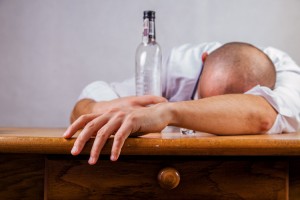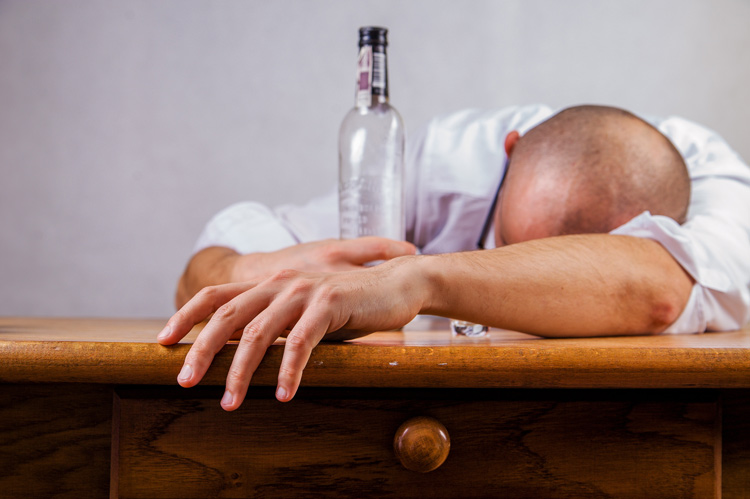Legal doesn’t mean safe.

Since alcohol is legal for adults over the age of 21 and opioid painkillers are legal with a prescription, people often mistakenly assume that mixing the two is no big deal. This couldn’t be further from the truth.
How Addiction Develops
Typically, people who are abusing both alcohol and opioids developed the dependency on alcohol first. If they are accustomed to regular heavy drinking, they may find it difficult or impossible to control their alcohol consumption while taking prescription opioid painkillers. Once they experience the high associated with this form of polydrug use, the temptation to continue the behavior is simply too much to resist. Opioid painkillers are highly addictive on their own and someone who is already abusing alcohol is particularly vulnerable to their effects. When the person has traits of a functioning alcoholic, their healthcare provider might prescribe opioids without realizing the danger.
Research shows that men are slightly more likely than women to develop an addiction to both alcohol and opioids, but this is thought to be attributed to the fact that men generally consume more alcohol than women. It’s important to remember that addiction does not discriminate. Anyone, regardless of age, gender, race, or socioeconomic status, can become addicted to alcohol and opioids.
Overdose Dangers
Mixing alcohol and opioids is dangerous because alcohol enhances the sedating effects of opioids. Someone who has consumed alcohol and opioids together will experience euphoria along with drowsiness, poor memory, slowed reflexes, impaired coordination, and difficulty concentrating.
Some of the factors that increase the risk of an overdose of alcohol and opioids include:
- Tolerance. Someone who regularly drinks or uses opioids will need to ingest large quantities to achieve the same intoxicating effects. An overdose can occur when they ingest more than the body is physically capable of handling.
- Pre-existing medical conditions. A number of medical conditions, such as heart problems, diabetes, or seizure disorders, do not mix well with alcohol or opioid pain relievers.
- Method of opioid consumption. Crushing and snorting Vicodin, Percocet, OxyContin, or other opioids is more dangerous than taking these drugs as pills because the substance hits the bloodstream faster.
- Age. CDC research indicates that opioid and alcohol overdoses increase as people age, with half of all fatal overdoses occurring in people over the age of 40. The body has more trouble processing alcohol as a person ages and older adults are more likely to suffer from medical conditions that can cause interactions with alcohol or opioids.
- Relapse following treatment. When someone goes through treatment for substance abuse, the detox process drastically lowers their tolerance to the substance that was previously being abused. If they relapse and take the same dosage they would normally use, this carries a high risk of overdose.
Mixing opioids and alcohol drastically slows breathing, potentially leading to a situation where the body is not getting enough oxygen and the brain shuts down organ systems. Signs of an overdose include:
- Nausea or vomiting
- Dizziness
- Numbness
- Dehydration
- Low blood pressure
- Low body temperature
- Irregular heart rate
- Respiratory problems
- Unconsciousness
Treating an Overdose
An overdose is a medical emergency. If you believe someone is experiencing an overdose, call 911 immediately. Stay with the person until help arrives and provide as much information as you can about what substances they have used and any medical conditions they may have.
Naloxone, sold under the brand names Narcan and Evzio, binds to the same pain receptors that are affected by opioids and can temporarily reduce the effects of an overdose. It will allow the person enough time to seek medical care at an emergency room. Naloxone won’t address the effects of alcohol poisoning, but emergency room personnel can administer activated charcoal, pump the stomach, or provide vitamins and glucose to prevent complications as the body rids itself of alcohol.
Once the immediate danger has passed, a person who has experienced an overdose needs to have access to evidence-based addiction treatment. This includes medically-supervised detoxification followed by individual and group therapy to address the underlying causes of substance abuse. Cognitive behavioral therapy (CBT) can help individuals understand their triggers, cope with cravings, develop healthier relationships, and implement the habits of a wellness-focused lifestyle. Holistic treatments, such as art or music therapy, yoga, and meditation, may also be used to provide support for specific goals such as improving mental health, alleviating chronic pain, or dealing with the effects of past trauma.
We Can Help
At St. Joseph Institute for Addiction, a leading Pennsylvania drug and alcohol treatment center, we help men and women struggling with substance use disorders develop the foundation for lasting recovery. Our comprehensive services include residential treatment as well as relapse prevention and aftercare services designed to ease the transition back to independent living.
To learn more about SJI Pennsylvania drug and alcohol rehab, and our programs, please contact us at (814) 228-8881.


